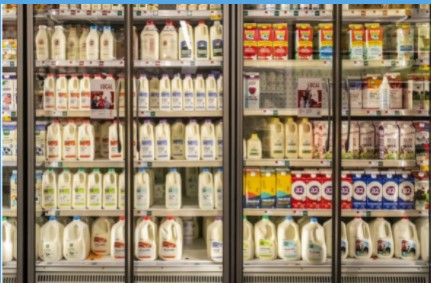News
Milk Prices May Be Lower Next Year
Milk Prices May Be Lower Next Year

The market is now headed into a period when much of the holiday demand for dairy products has been met with fill-in orders still needing to be taken care of as those orders are placed. But time is running out and much of what will take place is taking care of regular demand as we move forward. We will continue to see some volatility but much of the volatility might be more evident in butter. With good demand, lower inventory, and strong exports, volatility will abound but may at lower levels than it had been during the Fall.
High food prices and the effects of inflation have not had an extremely negative impact on dairy demand. However, there is concern this may have a greater impact once we move into 2023. Normally, demand slows during the first quarter compared to the fourth quarter and this year should be no exception. A continued rise of the interest rate and the potential for a recession is still looming. There was some hope that the rise of interest rates could slow, but there is concern the Fed will raise the interest rate yet another 0.75% at their next meeting. Slowing demand and continued increased of interest rates to slow inflation may impact overall consumer demand. The result would be lower prices.
On the recent World Agricultural Supply and Demand report, USDA estimates the Class III average price next year to be $2.95 lower than this year averaging $19.80. The average Class IV price is projected to be $4.40 lower than this year averaging $20.10. The All-milk price is estimated at $22.70 for 2023, down $2.95 from this year. Cheese is estimated to average $0.12 below this year at $2.00 with butter $0.41 lower averaging $2.47 per pound. In essence, USDA is factoring in slowing demand and higher inventory.
In looking at potentially lower milk prices next year and the uncertainty over grain prices, it will be a good risk management decision to be involved in the Dairy Margin Coverage program. So far this year, payments have been received in the month in August and September. One never knows what milk prices will do, much less what grain prices will do or how they will move with one another. USDA has extended the signup for the program through January 31,2 023. It was not a surprise that USDA extended the signup as they have done this every year since the program began. This is a good risk management program to use in conjunction with other hedging strategies.
The bright spot looking ahead to next year will be exports. That is if they continue to improve as they have been the past few years. Cheese exports for the first ten months of the year are 12% above the same period a year ago while butterfat exports are 43% above the same period. Exports of total milk solids is up 4% This strong growth is expected to carry over into next year and hopefully remain in an upward trend. China had been increasing their demand for dairy products but with their zero Covid policy this year and the resurgence of Covid cases recently, exports to China have been down significantly. If that can be regained again over time, it would help to keep further support to the growth of exports.
This year has been a good year for milk prices but not as profitable as one would have hoped as input costs were high increasing the cost of production. Much can happen next year with milk prices hopefully better than what USDA estimates.
Robin Schmahl is a commodity broker with AgDairy, the dairy division of John Stewart & Associates Inc. (JSA). JSA is a full-service commodity brokerage firm based out of St. Joseph, MO. Robin’s office is located in Elkhart Lake, Wisconsin. Robin may be reached at 877-256-3253 or through the website www.agdairy.com.
The thoughts expressed and the basic data from which they are drawn are believed to be reliable but cannot be guaranteed. Any opinions expressed herein are subject to change without notice. Hypothetical or simulated performance results have certain inherent limitations. Simulated results do not represent actual trading. Simulated trading programs are subject to the benefit of hindsight. No representation is being made that any account will or is likely to achieve profits or losses similar to those shown. There is risk of loss in trading commodity futures and options on futures. It may not be suitable for everyone.
CATEGORIES
LATEST NEWS
CONTACT US
Mobile:+86-18612182039
Tel:+86-029-85274126
Whatsapp:+8618612182039
Email:info@watarbio.com
Add:No. 12, Hongzhuan South Road, Yanta District, Xi’an 710061, China
